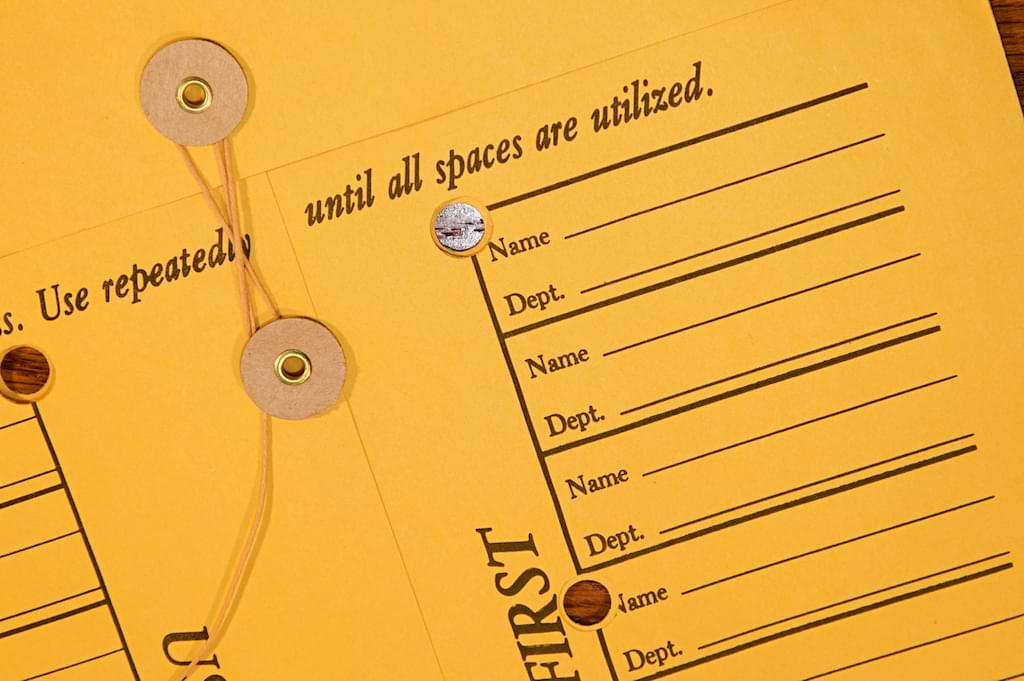6 Reasons Why Employee Communication Is the Core of Internal Communications
As internal comms gain greater reach and become more participatory, employee communication is reaping the benefits. And so too are the businesses where managing internal comms has become a priority.

I understand why the comms function still tends to get lost among the factors that make or break a company’s success. I’m old enough to remember the days when internal communication travelled a one-way street. Messages came from on high, landing on our desks or in our inboxes. Whether they were understood — or even read — was anyone’s guess. And the weirdest thing was that no one really seemed to care!
Thankfully, those days are over in many of today’s organizations. In the aftermath of the Covid-19 pandemic, Communicators have finally begun placing greater emphasis on the employee side of the comms equation. And with good reason.
 Remember when employee communication came in an envelope?
Remember when employee communication came in an envelope?
Still, internal communication and employee communication are often taken for granted. And the two terms are often even used interchangeably. But there are some important differences between the two that tell a story about how communication at work is changing.
Let’s have a look.
What is employee communication and why is it important?
Employee communication is the process of exchanging information between employers and employees. It helps to ensure that everyone is on the same page and aware of the company’s goals and objectives. Employee communication can include face-to-face meetings, emails, newsletters, intranet postings, and more. It is crucial for employers to keep their employees informed and to be sure that they understand a company’s direction and purpose.
Employee communication is essential to the success of any business. A recent study by the European Journal of Business and Management Research found a clear indication “that business communication
has a significant impact on the level of employee performance in an organization.”
Effective employee communication builds trust within companies and has a proven impact on employee engagement, company culture, and bottom-line productivity.
Nevertheless, many employees still report receiving limited or irrelevant information. That’s why, to be successful, employee communication needs the proper tools for enabling its management. These tools must work in tandem with leadership support, a clear strategy, and proper measurement capabilities.
 Effective employee communication doesn’t always travel in a straight line.
Effective employee communication doesn’t always travel in a straight line.
10 benefits of effective employee communication
Enhanced productivity: Effective communication that reaches every employee improves productivity by ensuring access to necessary information and resources, enabling efficient and effective work.
Increased collaboration: A culture of collaboration and teamwork is fostered through effective communication, leading to better results and more successful projects as employees share ideas and work together.
Enhanced morale: When employees feel well-informed and included in decision-making processes, job satisfaction and positive attitudes toward work are promoted, contributing to enhanced morale.
Better problem-solving: Identifying and resolving problems more quickly and efficiently is facilitated by effective communication, improving the overall functioning of the organization.
Improved customer service: Access to the latest information and effective communication among employees enables the provision of high-quality customer service, benefiting both employees and customers alike.
Improved accessibility: Having multiple channels for communication ensures that important updates and information are accessible to all employees, regardless of location or availability, enhancing overall accessibility.
Enhanced engagement: Providing employees with multiple communication channels fosters engagement and participation, encouraging them to share ideas and feedback and building stronger relationships within the organization.
Increased flexibility: Employees can choose the communication method that works best for them, leading to improved productivity and satisfaction, thereby increasing flexibility within the organization.
Better crisis management: In times of crisis or emergency, having multiple communication channels ensures that important information is quickly and effectively distributed to all employees, aiding in crisis management and maintaining trust.
Real dialogue and actionable feedback: Promoting two-way communication allows employees to share ideas and feedback, fostering collaboration, engagement, and problem-solving, ultimately improving the effectiveness and efficiency of communication within organizations.
How is employee communication different from internal communication?
Employee communication and internal communication are similar, but they’re not exactly the same. Internal communication refers to the way that information is shared within a company or organization. Employee communication specifically refers to the way that information is shared between an employer and their employees.
Once upon a time, employee communication traveled in one direction only: top down. Maybe you remember when announcements were primarily made on paper or distributed via meetings or word of mouth from managers and department heads. There might have been some follow-up scuttlebutt around the water cooler, but the path of company news, assuming it even reached you, ended once you got it.
Early intranets didn’t really change any of this. And they arguably made internal communication even less effective. I suspect there may have been an assumption on the part of communicators that once a message had been announced in this new digital space, their job was done. Of course, this approach meant that frontline workers without intranet access remained out in the communications cold. Even for people like me, who logged into a company computer every day, intranet content was largely irrelevant to my daily work. So I ignored it. And I certainly wasn’t alone.
But of course, employee communication was happening all the time.
Employee communication, on the other hand, like communication in general, has always been essential to organizational success. But its effectiveness has always depended on human connections. As such, it has always been dynamic and multidimensional. Digital technology has increased the reach of employee comms, but arguably at the expense of some of the human element. It can even be argued that the sharp rise in post-pandemic digital communication has led to workplace disruption.
Communication among teams, departments, and between individual employees has always been happening in the form of personal interaction and collaboration. But while communication plays an important role in collaboration, the latter requires active engagement and joint effort.
When people talk about employee communication nowadays, they’re generally talking about more high-level kinds of information sharing. Information that’s important for employees to understand the overarching purpose behind the work a company is doing.
 Cultivating your digital channels helps employee communication grow.
Cultivating your digital channels helps employee communication grow.
What’s the best channel for employee communication?
The best channel for employee communication depends on the size and needs of the organization. For smaller companies, email, instant messaging, and video conferencing are all popular options. Other common employee communication channels include meetings (both in-person and virtual), and internal messaging or collaboration tools (think Slack or Teams).
For larger organizations, an intranet or employee communications management platform may be more effective. Other popular channels include company newsletters, bulletin boards, and social media groups.
Ultimately, the best channel for employee communication is the one that works best for the organization and its employees.
Email: Email remains a great way to quickly communicate with employees and keep them informed of any changes or updates.
Employee apps: Employee apps can help to engage and involve employees by providing them with a platform for sharing ideas, providing feedback, and participating in company initiatives.
Intranet: Modern, mobile intranets are a great way to share information and resources with employees in an organized and secure manner.
How has employee communication raised the bar for internal comms?
Improving employee communication has had a positive impact on internal communication. By providing employees with regular updates and information about a company’s plans and goals, employers can help to ensure that everyone is working towards the same objectives.
In addition, effective employee communication can help to build trust and improve morale among employees. This can help to foster a more collaborative and productive work environment.
By creating channels for employees to share their ideas and feedback, employers can also gain valuable insights. This knowledge can help to improve internal communication and decision-making within the organization.
By improving employee communication, companies can contribute to enhancing overall internal communications. It can and will foster stronger connections, alignment, and engagement within the entire organizational framework.
6 Reasons Why Effective Employee Communication Is the Core of Internal Comms
1. It can reach everybody
There are several workplace benefits to having effective communication that can reach every employee. Here are just a few:
Improved productivity: When all employees have access to the information and resources they need, they’re able to work more efficiently and effectively.
Increased collaboration: Effective communication can help to foster a culture of collaboration and teamwork, which can lead to better results and more successful projects.
Enhanced morale: When employees feel that they are well-informed and included in decision-making processes, they are more likely to be satisfied with their jobs and have a positive attitude towards their work.
Better problem-solving: Effective communication can help to identify and resolve problems more quickly and efficiently, which can improve the overall functioning of the organization.
Improved customer service: When employees have access to the latest information and are able to communicate effectively with one another, they are better able to provide high-quality customer service.
Effective communication that reaches every employee can help to create a more positive and productive work environment.
2. It’s multi-channel — and even sometimes omnichannel
Having multiple channels for employee communication can provide several benefits for an organization. Some of the benefits of having multiple communication channels are:
Improved accessibility: By providing employees with multiple ways to access information, organizations can ensure that all employees have the opportunity to receive important updates and information, regardless of their location or availability.
Enhanced engagement: Providing employees with multiple channels for communication can help to foster a culture of engagement and participation. This can encourage employees to share their ideas and feedback, and can also help to build stronger relationships within the organization.
Increased flexibility: Having multiple communication channels allows employees to choose the method that works best for them, which can help to improve their productivity and satisfaction.
Better crisis management: In the event of a crisis or emergency, having multiple communication channels can help to ensure that important information is quickly and effectively distributed to all employees, regardless of their location or availability.
Having multiple channels for internal communication can ultimately help to improve the effectiveness and efficiency of communication within organizations.
3. It’s mobile and available on personal devices
Making internal communication available on the mobile devices of employees can provide several benefits for an organization. They include:
Improved accessibility: By making internal communication available on employees’ mobile devices, organizations can ensure that employees have access to important information and updates at all times, regardless of their location or availability.
Enhanced productivity: Providing employees with the ability to access internal communication on their mobile devices can help to improve their productivity by allowing them to stay informed and respond to important updates and messages while on the go.
Increased engagement: Making internal communication available on mobile devices can help to foster a culture of engagement and participation by providing employees with an easy and convenient way to share their ideas and feedback.
Better crisis management: In the event of a crisis or emergency, making internal communication available on mobile devices can help to ensure that important information is quickly and effectively distributed to all employees, regardless of their location or availability.
Without a doubt, providing employees with access to internal communication on their mobile devices improves the effectiveness and efficiency of communication within organizations.
4. It creates real dialogue and actionable feedback
Two-way employee communication at work can provide several benefits for an organization. Some of these benefits include:
Improved collaboration: Two-way communication allows employees to share their ideas and feedback, which can help to foster a culture of collaboration and teamwork. This can lead to better results and more successful projects.
Enhanced engagement: By providing employees with the opportunity to participate in two-way communication, organizations can encourage them to take an active role in decision-making processes and can help to build stronger relationships within the organization.
Increased morale: Two-way communication can help to improve morale by making employees feel that their opinions and ideas are valued and considered. This can lead to greater job satisfaction and a more positive work environment.
Better problem-solving: Two-way communication can help to identify and resolve problems more quickly and efficiently by allowing employees to share their insights and experiences.
Improved customer service: Two-way communication can help to improve customer service by allowing employees to share information and collaborate with one another to resolve customer issues.
Two-way communication will help to improve the effectiveness and efficiency of communication within organizations.
5. It’s instant
Instant communication at work can provide several benefits for an organization, including:
Improved responsiveness: Instant communication allows employees to quickly and easily share information and respond to requests and inquiries, which can help to improve the speed and efficiency of communication within the organization.
Enhanced collaboration: Instant communication can help to foster a culture of collaboration and teamwork by allowing employees to share ideas and feedback in real-time. This can lead to better results and more successful projects.
Increased morale: Instant communication can help to improve morale by making employees feel that they are part of a connected and supportive team. This can lead to greater job satisfaction and a more positive work environment.
Better problem-solving: Instant communication can help to identify and resolve problems more quickly and efficiently by allowing employees to share their insights and experiences in real-time.
Improved customer service: Instant communication can help to improve customer service by allowing employees to quickly and easily share information and collaborate with one another to resolve customer issues.
Instant communication can greatly help to improve the effectiveness and efficiency of communication within an organization.
6. It tells a story
There are definite benefits to using storytelling in employee communication. Storytelling can be an effective way to engage and motivate employees. It can also help to make complex information more relatable and easy to understand.
Using stories to illustrate key points and ideas can help organizations foster shared understanding and sense of purpose among employees. In addition, storytelling can help to build trust and create emotional connections with employees. Such connections can improve morale and encourage collaboration and teamwork.
Using storytelling in internal communication can be a powerful tool for engaging and motivating employees. And it will greatly improve the effectiveness of communication within an organization by virtue of seeming more human.
Communication is the key for any global business.”
Anita Roddick, founder of the Body Shop International
What’s the greatest benefit of effective employee communication?
The top benefit of effective employee communication is that it will improve the overall performance and productivity of an organization. When employees have clear and open lines of communication, they can collaborate better and work together towards common goals. This can help to increase efficiency and reduce the likelihood of misunderstandings and mistakes.
 Effective employee communication can foster a sense of trust and engagement among employees.
Effective employee communication can foster a sense of trust and engagement among employees.
In addition, effective employee communication can foster a sense of trust and engagement among employees. This can in turn lead to higher levels of job satisfaction and commitment.
Ultimately, effective employee communication is essential for the success of any organization. The key, it seems, is making sure that your internal communication — interactive, instant, inspiring — is powered by your people.









